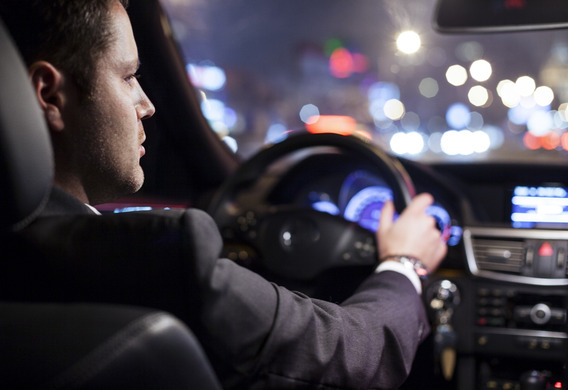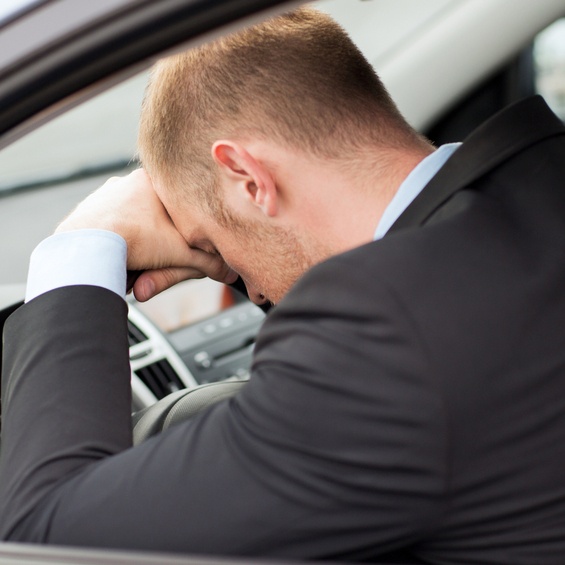
Why is it so important to sit behind the wheel right?
The optimal landing at the wheel minimises all muscular tension and does not disrupt the blood circulation process, and the driver's body is in the most operational state. Consequently, in the event of an unforeseen situation, a person can react quickly and make nothing more difficult.
So, what's the proper landing? It is necessary to keep your back steady-for this the back of the chair shall be at an angle from 90 to 110 degrees. The distance between the knee joint and the seat cushion shall be approximately equal to the length of the palm, so that the centre of gravity is in the seat, not the weight. The driver's foot shall be fully straightred with the pedal pedal fully removed.
The setting of mirrors is one of the most important procedures in the correct landing. The outer rear-view mirrors shall be in such a position that, with a minimum rotation of the head, the maximum angle of view shall be opened.
If you were to bend over the steering wheel, not only would it not be better, but it would be worse. In addition, the forearm will be shackled and will not be sufficiently free to steer
You'd think it was easy. However, there are several errors that drivers often make. It is often seen that the driver is tilting over the steering wheel. The driver has a forearm, and his hands lack the freedom to, for example, make a complete turn of the wheel. This error is often connected to the fact that, leaning forward, the driver tries to improve the visibility. Although, in fact, he is only making it worse. In addition, to ensure the maximum sensitivity of the vestibular apparatus, the head of a person should be the subject up.

How to make the right landing
One of the main conditions is the correct and comfortable landing of the driver-the maximum contact of the back with the seat back. The first step is to back the back and squeeze the left foot of the clutch to the floor. To maintain this position, adjust the seat so that the left leg remains slightly bent in the knee. Next, it is necessary to take the steering wheel at its top-and reposition the back of the seat in such a way that the back is in contact with it: the spatula and the lumbar shall be fully attached to the chair.
The rouble should not be the driver's main support: only the weight of the hands is concentrated on it
It is important that the rudder is not a support. It should only focus on the weight of the hands. However, as mentioned above, the centre of gravity should be concentrated in the chair: about 30 per cent of the weight of the body should be in the saddle, the rest weight must be on the back of the chair.
The next step is seat belts. It is important to understand that the seatbelt will provide the driver with more complete information about acceleration and other forces, as well as keep the motorist in place during a steep spiral (not to mention accidents).
Now we have to deal with the gearbox. In the case of a motor vehicle with a mechanical box, the right hand has to be turned on by the far side (third or fifth), in the case of "machine gun", it is the position P (parking). The left hand must be on the handlebars at the top of the port.
The correct position on the handlebars is also important. They shall be located in the upper section of the steering wheel. In order to determine the correct position, the trainers used the phrase "10-2 on the dial". In doing so, thumbs must be placed inside the steering rim, and the main force of the grip is the pinky fingers and the unnamed fingers. The rest of the fingers in a normal ride remain relaxed, but they have to be prepared to increase the grip of the wheel at any second.
In order not to obstruct the circulation, the hands of the hand should not be much above the elbows. In order to make the landing more comfortable, modern cars are equipped with adjustable steering in two planes-in height and on departure. Use this function to lock the rudder in the optimal position.
Escape fracture of the neck and damage to heads in an accident will help properly adjusted head restraint. To do this, it should be raised to the back of the head and then be close to the head. Not many drivers realize that the head restraint is not needed to rely on it while driving, but to protect the head in an accident.
If you have a muscle or a muscle, then you have to change your landing.
The final stage of the right landing is the position of the feet on the pedals. To do this, you have to put your left foot on the clutch pedal and the right foot on the brake pedal. Then put the heels down the vertical axis of the pedals. Preserving the position of the heel, it is necessary to unlock the socks in such a way that the left leg is supported by a sock on the floor near the clutch pedal and the right foot on the foot of the gas.
The last stage in the correct landing is the setting of the mirrors: the back corner of the side mirror should be visible in the back of the body.
In order to make a proper landing at the helm, it is necessary to monitor the position of the arms, legs and back for two or three weeks. The stenrage of any muscle is, in most cases, the result of a mislanding.

It should be remembered that a proper landing would not only make driving more comfortable, but also ensure safety in the event of an accident.









